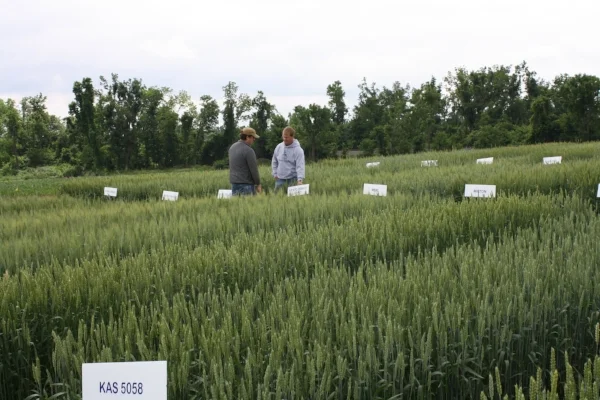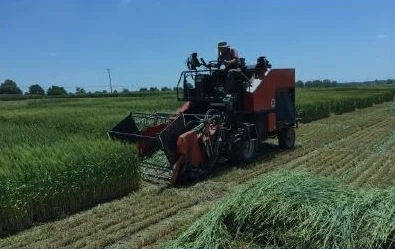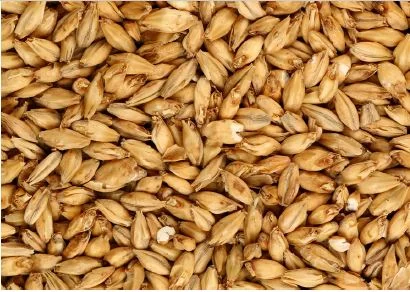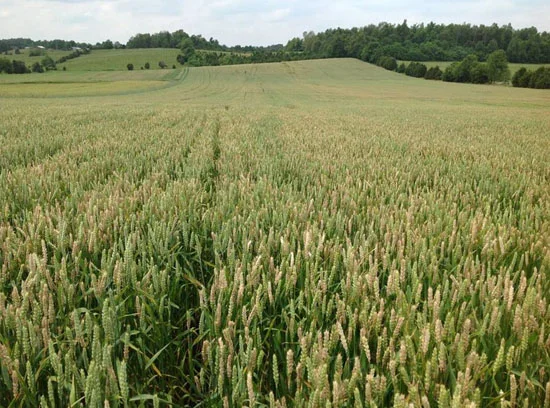With thinking about wheat planting has come the usual, and less usual, questions about fall soil fertility. This article is prompted by recent questions about one of the less usual topics, in-furrow starter fertilizer for wheat. What, how, why/when and why/when not? Photo from K-State.
Read MoreThe USDA reports reveal the potential for a bullish wheat market based on declining U.S. stocks as well as reduced stocks and production in major exporting countries.
Read MoreItalian or annual ryegrass (Lolium perenne L. ssp. multiflorum ) has been a major weed issue for Kentucky wheat growers for many years. The introduction of ALS-inhibiting herbicides that had selectivity on ryegrass brought about a great tool for con-trolling ryegrass in wheat post-emergence.
Read MoreOne of the most critical management decisions Kentucky wheat producers must make in late summer/early fall is choosing which wheat varieties to grow. Even though Kentucky’s climate is extremely variable from year to year, there are several must have traits: yield and test weight are always at the top of the list, but disease and lodging resistance are essential as well.
Read MoreThe University of Kentucky is holding a Late Season Field School on September 6, 2018. Sign in begins at 8:30 am and the workshop will run from 9:00 am to 4:00 pm.(CT).
Read MoreThe U.S. Department of Agriculture’s National Agricultural Statistics Service (NASS) is surveying Kentucky producers for its County Agricultural Production Survey (CAPS) small grains survey. The survey will collect information on total acres planted and harvested, and yield and production of small grains crops. CAPS will provide the data needed to estimate acreage and production of winter wheat in Kentucky.
Read MoreThe University of Kentucky Small Grain Variety Testing Program evaluates wheat and barley varieties that are commercially available or may soon be available to farmers. Annual variety performance testing provide farmers, seed producers, extension agents and consultants with current, unbiased information to help them select the varieties best adapted to their locality and individual requirements.
Read MoreLeadership of the Kentucky Small Grain Growers Association and Promotion Council attended the UK Wheat Field Day on May 8 to honor UK Wheat Breeder Dr. David Van Sanford for his many contributions to Kentucky's wheat industry.
Read MoreGrowing winter wheat and other cool season grains in Kentucky is not an easy task. And even though the current crop is still slowly progressing, my fellow growers and I are already looking at the challenges and opportunities of the next crop.
Read MoreThe center is a testament to the strong working relationship between UK specialists and Western Kentucky farmers with the idea coming from Logan County farmer Don Halcomb (Ky Small Grain Promotion Council Chairman) and Lloyd Murdock, UK extension soils professor emeritus.
Read MoreAfter a successful first year, we are pleased to announce the next series of trainings of the 2018 Wheat Field School at the University of Kentucky Research and Education Center (UKREC). This program is possible through the partnership and support of the Kentucky Small Grain Growers Association.
Read MoreThe November WASDE made minor changes to the 2017-18 wheat supply and demand projections, which is typical as there is little new production or demand information until the “final” estimates in January.
Read MoreChristian County is the leading wheat producing county in Kentucky for 2017, with production totaling 4,222,000 bushels, harvested from 53,000 acres. Wayne County had the highest average yield.
Read MoreAnnual UK Winter Wheat Meeting in Hopkinsville. CCA and Pesticide Credits approved.
Read MoreWheat is an important source of forage for many Kentucky growers. Approximately 20% of Kentucky’s
annual wheat acreage is not harvested for grain, and much of that acreage is utilized for forage production.
The objective of this project is to increase our understanding of the genes that affect the vernalization and photoperiod response in wheat.
Read MoreDespite sufficient total annual rainfall in Kentucky, irrigation for efficient crop production and for securing high yields becomes increasingly relevant because draught periods often occur
at times and crop growth stages when the water is needed.
he boom in distilleries and interest in locally-grown foods has combined to generate much interest in barley and rye for Kentucky. This has resulted in considerable interest from producers on current agronomic management practices for barley and rye.
Read MoreEvery year, vomitoxin levels caused by Fusarium graminearum, in soft red winter wheat are of major concern to wheat producers and millers. Current agronomic practices to reduce vomitoxin levels include planting moderately resistant wheat cultivars and fungicide applications at Feekes 10.5.1.
Read MoreThis objectives of this project were to monitor the abundance of aphid species and viruses in the fall 2016 and spring 2017 in research plots of Princeton; survey for presence of new invasive Sipha maydis in several regions of Western KY, and collect samples for virus detection; and to evaluate insecticide treatments for aphid management and BYDV’s percentages in treatments.
Read More


















